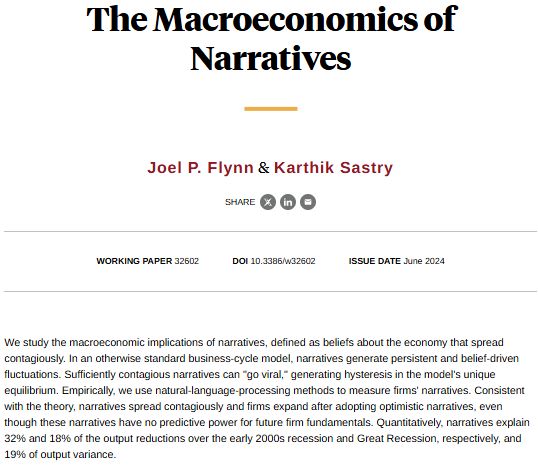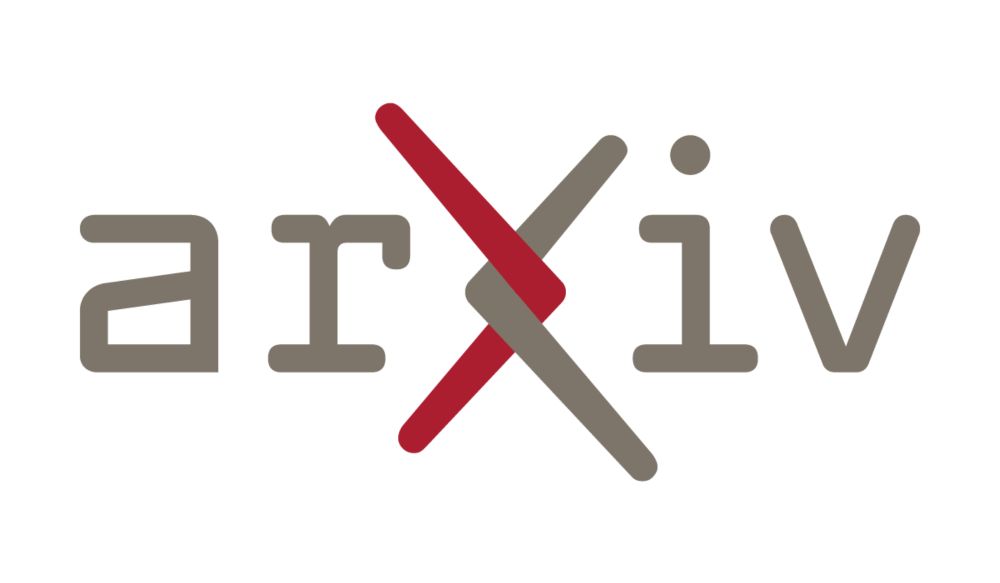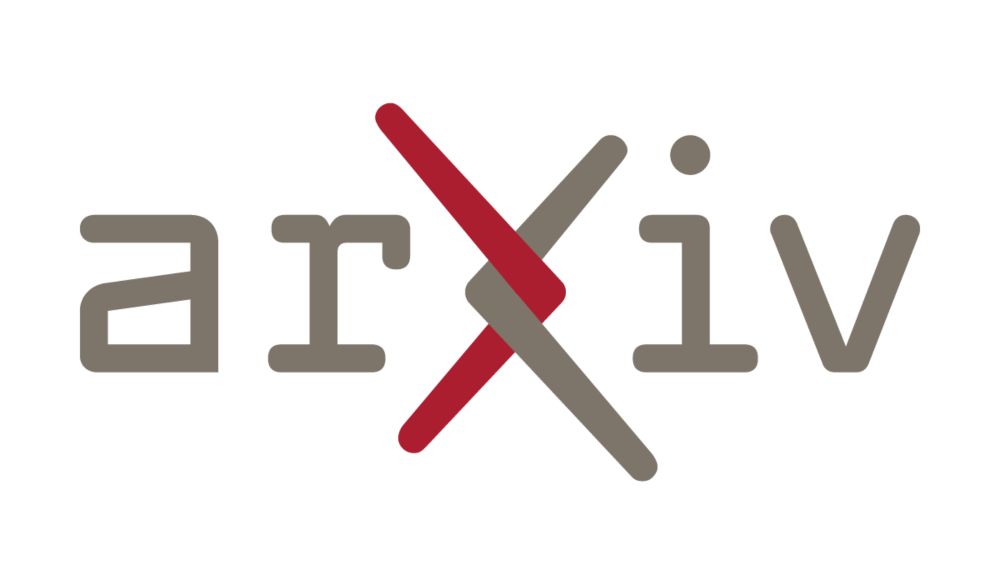We are proud to have our very own @economeager.bsky.social as part of the first ever human MCMC chain traversing the space of all possible names and genders. We feel sincere congratulations are in order to Rafe, Rachel Leah and all other Bayesians involved.
04.08.2025 06:24 — 👍 20 🔁 3 💬 1 📌 0
We are currently engaged in a vast MCMC scheme iterating through names and genders among all the Bayesian econometricians. As in HMC, approximate conservation laws are important for maintaining invariance. Please be patient while we converge.
04.08.2025 06:03 — 👍 22 🔁 2 💬 1 📌 1
OMG OMG OMG congrats Rafe! I can tell you that making a new name public has been an incredibly meaningful step and I’m so excited for you to experience it.
04.08.2025 05:27 — 👍 1 🔁 0 💬 1 📌 0
Re BLS news, a few years ago I resigned from a CBO position before starting because I worried that regardless of what I did, the presence of someone like me would be used to impugn the credibility of a highly professional, nonpartisan agency. I can't know, but I can't say I made the wrong decision.
02.08.2025 16:04 — 👍 4 🔁 0 💬 0 📌 0
Thanks Yucheng for this opportunity! I'm looking forward to working together!
01.08.2025 21:37 — 👍 1 🔁 0 💬 0 📌 0
Right, Shiller clearly had in mind a SIR-style contagion model, which allows arbitrary heterogeneity & interaction. The specificity of narratives as information amenable to evaluation and (Bayes?) updating is stylized away here and not in the former, but DeGroot would get you something like SIR.
01.08.2025 04:31 — 👍 3 🔁 0 💬 0 📌 0
🤷♀️ It's new, and the model has enough moving parts to make it hard to disentangle. Maybe the contagion mechanism could be transported? I think finance people have done more in this area, building on Shiller's pre-formalization ideas.
31.07.2025 22:10 — 👍 3 🔁 0 💬 1 📌 0

NBER WP 32602, the earlier version of the paper. Formerly titled "The Macroeconomics of Narratives", now "Contagious Business Cycles"
Joel P. Flynn and Karthik Sastry
Abstract: We study the macroeconomic implications of narratives, defined as beliefs about the economy that spread contagiously. In an otherwise standard business-cycle model, narratives generate persistent and belief-driven fluctuations. Sufficiently contagious narratives can "go viral," generating hysteresis in the model's unique equilibrium. Empirically, we use natural-language-processing methods to measure firms' narratives. Consistent with the theory, narratives spread contagiously and firms expand after adopting optimistic narratives, even though these narratives have no predictive power for future firm fundamentals. Quantitatively, narratives explain 32% and 18% of the output reductions over the early 2000s recession and Great Recession, respectively, and 19% of output variance.
I haven't looked at the details, but this paper seems to have most of those? joelflynn.com/wp-content/u...
31.07.2025 21:46 — 👍 5 🔁 2 💬 2 📌 0

SNSF Data Portal
The Swiss National Science Foundation's Data Portal presents interactive Key Figures, facts on funded projects and involved people in the Grant Search and the COVID-19 project registry, Dataset downlo...
Professional Update: I am now a Senior Research Associate (postdoc) at the Department of Finance, Universität Zürich, sponsored by Felix Kübler and Yucheng Yang on a grant through the Swiss NSF!
I'm looking forward to being part of the Computational Economics community in Switzerland and Europe!
31.07.2025 16:32 — 👍 19 🔁 1 💬 2 📌 1

Hand-size ringed ruled notebook with Rilakkuma (a Hello Kitt teddy bear) on it, with friends, dressed in a variety of nautical costumes including a seal, an octopus, a ray, and a shark. The contents of the notebook are primarily proofs related to the Generalized Method of Moments, and some derivations about Sobolev spaces.
Gotta get on the next level (it's full of econometric theory)
30.07.2025 16:37 — 👍 5 🔁 0 💬 1 📌 0
One time a store owner started playing this one after I entered while I was wearing wedges and I thought he was doing a transphobia but I stayed and listened to the whole song because it's a banger.
26.07.2025 13:57 — 👍 1 🔁 0 💬 1 📌 0
Integrate it as many times as needed to get the derivatives you need. This also works almost surely with samples from a Brownian motion. Or fractional BM if you want a specific Holder order.
24.07.2025 21:09 — 👍 3 🔁 0 💬 1 📌 0
On an invitation from a friend, I just played a game in a local women's softball league.
My controversial opinion on 🏳️⚧️ women in sports: everyone on both teams was really nice and I had a really fun time! ⚾
23.07.2025 00:15 — 👍 10 🔁 1 💬 0 📌 0
The case where you have logit error distributions is a bit more restrictive, but at least doesn't end up with crazy nonstandard asymptotics, and there's even a paper (albeit a pretty technical Econometrica) that works out the details:
19.07.2025 14:29 — 👍 2 🔁 0 💬 0 📌 0

FRED-MD and FRED-QD: Monthly and Quarterly Databases for Macroeconomic Research
FRED-MD and FRED-QD are large macroeconomic databases designed for the empirical analysis of 'big data.'
Also, tongue in cheek but I generally believe it: if it's a major macro series in FRED, Serena Ng has a database where she decided on good detrending methods for each series on FRED. She has good intuition and I would usually just use her choices:
www.stlouisfed.org/research/eco...
19.07.2025 13:32 — 👍 2 🔁 1 💬 1 📌 0
Additive Components Models
I've attached my undergrad detrending notes.
For forecasting, there are advantages to going with differences related to error recovery emphasized by Hendry. My review has different theory for why this works but it remains good practice www.goodreads.com/review/show/...
19.07.2025 13:29 — 👍 1 🔁 1 💬 1 📌 0
Often eg a linear trend will start to fit badly. Higher order polynomials are usually a bad idea. Splines (HP is a spline!) can be okay in sample but do badly out of it.
Look at the periodogram (dft) at low frequencies to inspect for misspecification: if it spikes up, you've missed something.
19.07.2025 13:24 — 👍 1 🔁 1 💬 2 📌 0
My view is always: start with an economic model of the trend. Often we have strong intuition from growth, financial, demographic etc theory for at least the order of integration and some slow moving components. Allow for breaks/regime changes if subject to major measurement or policy shifts.
19.07.2025 13:19 — 👍 1 🔁 1 💬 1 📌 0
IO is not my area at all; I just help with the econometrics. There's lots of work since Tirole on strategic pricing and on M&A, but the theory is murky (anything goes), and I don't know the empirics well. @florianederer.bsky.social has studies on startup acquisitions so I might start to look there.
19.07.2025 13:12 — 👍 2 🔁 0 💬 1 📌 0
To be fair to the authors here, the general theory is still there in the paper, if you know to look for it, and I suspect the switch in presentation was propelled by the review process, which can lead to incommensurable demands across audiences.
19.07.2025 12:23 — 👍 0 🔁 0 💬 0 📌 0
It was an IO oligopoly entry game with market level data; maximum score has been used in the area to represent one shot deviation inequalities as discrete choice problems.
19.07.2025 12:17 — 👍 2 🔁 0 💬 1 📌 0
I wrote the thread because I spent today writing a referee report while wearing a rainbow tulle princess dress because I can and getting compliments from strangers and children and the sweet nb from the pastry shop, then collapsing from lack of sleep.
I just woke up and barely know where I am. 👍
19.07.2025 02:08 — 👍 1 🔁 0 💬 1 📌 0
All this is just to say that there's a role for division of labor and advanced theory work; its application is just highly concentrated into bespoke applications.
Respect to people who build big buttons that say "SOLVE MY PROBLEM ✅", but most statistics, even by them, is for building statisticians.
19.07.2025 01:39 — 👍 5 🔁 1 💬 0 📌 1
We got what people say they want from econometricians: a concrete estimator you could conceivably actually use!
But it's for 1 niche application that most people, including my client, have no interest in and would never find even if the theory could help them, contributing to the pattern below:
19.07.2025 01:39 — 👍 2 🔁 0 💬 2 📌 0
![The latest version of "Debiased Semiparametric U-statistics", with a new title:
Machine Learning Inference on Inequality of Opportunity
Juan Carlos Escanciano, Joël Robert Terschuur
[Submitted on 10 Jun 2022 (v1), last revised 4 Oct 2023 (this version, v3)]
https://arxiv.org/abs/2206.05235](https://cdn.bsky.app/img/feed_thumbnail/plain/did:plc:mk3mty3pudd7m7amrkvegu7f/bafkreiep3bannyga2sv2npmuwpasd7d7j2hxfr62fknkapgyigizyef44y@jpeg)
The latest version of "Debiased Semiparametric U-statistics", with a new title:
Machine Learning Inference on Inequality of Opportunity
Juan Carlos Escanciano, Joël Robert Terschuur
[Submitted on 10 Jun 2022 (v1), last revised 4 Oct 2023 (this version, v3)]
https://arxiv.org/abs/2206.05235
The title, "Debiased Semiparametric U-statistics" is meaningless to the average practitioner, but indicated it had exactly the theory I needed. It was hard to find because the title is now "Machine Learning Inference on Inequality of Opportunity" about 1 implementable estimator that uses the theory
19.07.2025 01:39 — 👍 1 🔁 1 💬 2 📌 0
![The paper I found on semiparametric U-statistics:
Debiased Semiparametric U-Statistics: Machine Learning Inference on Inequality of Opportunity
Juan Carlos Escanciano, Joël Robert Terschuur
Submitted on 10 Jun 2022 (this version, v1), latest version 4 Oct 2023 (v3)]
https://arxiv.org/abs/2206.05235v1](https://cdn.bsky.app/img/feed_thumbnail/plain/did:plc:mk3mty3pudd7m7amrkvegu7f/bafkreic4spuy6wsoop3aznfomvuap6qbtemb26rfkkmmrprxkmbefzv3a4@jpeg)
The paper I found on semiparametric U-statistics:
Debiased Semiparametric U-Statistics: Machine Learning Inference on Inequality of Opportunity
Juan Carlos Escanciano, Joël Robert Terschuur
Submitted on 10 Jun 2022 (this version, v1), latest version 4 Oct 2023 (v3)]
https://arxiv.org/abs/2206.05235v1
Papers are still coming out trying to fix it to this day. The client's setting was slightly nonstandard, so even those didn't work; doing it right would require combining multiple sources of theory, including results on U-statistics, another ugly area. Luckily, I found a paper w/ general results!
19.07.2025 01:39 — 👍 1 🔁 1 💬 1 📌 0
"Useless estimator" story: I recently consulted with someone using Maximum Score for a real well-motivated empirical project! I was excited because I'd known it mostly as a theoretical curiosity, w/ the ugliest asymptotic distribution known to man that also breaks the bootstrap.
🧵
19.07.2025 01:39 — 👍 10 🔁 4 💬 2 📌 0
A case of regress in applied econometrics: Arellano Bond 91 on feedback in panel data was the most cited econ paper of all time. Recent focus on DiD, with or without heterogeneity, has given us methods which fail under feedback, which is omnipresent in dynamic models. A useful reassessment here:
18.07.2025 13:27 — 👍 9 🔁 3 💬 0 📌 0
The School of Economics at the UNSW Business School.
UNSW Sydney.
Asst Prof @uwischool.bsky.social; #NLP #healthinformatics #accessibility #scholcomm
🚴🏔️🍄❄️⛷️🧶⚫️⚪️📚🍸in Seattle; llwang.net; she/her
Economist, Enthusiast of Chess, Math, Music and similar items. Data Dude.
Some call me the space cowboy, some call me the gangster of love. Sober 9 years.
Known to rearrange thoughts in other people's brains.
A. Bartlett Giamatti Prof. of CS @ Yale | Algorithms, AI & society
Newsletter: The Intelligence Loop https://nisheethvishnoi.substack.com
Views my own
Studies Algorithmic game theory and online learning
University of Pennsylvania/ Simons institute
https://www.seas.upenn.edu/~eshwar/
Prof of Data Sciences at ENSAE (IPP), Paris; Bayesian computation, Sequential Monte Carlo and stuff
[bridged from https://mathstodon.xyz/@nchopin on the fediverse by https://fed.brid.gy/ ]
Macroeconomist @ Frankfurt School & Research Director @ ifo Institute.
www.benjaminborn.de
Statistician at UW developing methods for demography, climate change, cluster analysis, model selection & averaging.
Data Science, open source and economics. Currently working on fwildclusterboot and pyfixest.
https://github.com/s3alfisc
DOGE-displaced former civil servant technologist, current developer on analytics/stats for private and nonprofit sector. Amateur poet, recreational philosopher of math, and former photographer.
they/she. 🚄🏳️🌈
https://povertyofattention.com/
Professor at Northwestern CS. Economics, by courtesy. Study mechanism design, economics of algorithms, regulation of algorithms, AI and society. https://sites.northwestern.edu/hartline/
Personal account. Definitely my views and not those of the Richmond Fed
AI professor. Director, Foundations of Cooperative AI Lab at Carnegie Mellon. Head of Technical AI Engagement, Institute for Ethics in AI (Oxford). Author, "Moral AI - And How We Get There."
https://www.cs.cmu.edu/~conitzer/
U of Michigan PhD in Higher Education, studying college curriculum with LLMs. IES Pre-Doc in the Ford School of Public Policy. Spencer/NAEd Dissertation Fellow. Most Fashionable Boy 2010, Kaukauna High School. 🏳️⚧️
YouTuber, ex politician
She/Her
Co-host of Leechfest podcast
http://Patreon.com/miamulder
Prof. Most tweets about R. “Polisci, it’s all about what’s going on.”
http://arelbundock.com
(She/her)
Working on biology cell simulations.
Engineering, ML, NLP, Constrained Optimization, JuliaLang, AutoDiff, Programming
This is my professional bsky.
This is an automated new-posts account. Messages sent to it will go unread; attempts to converse with it will be fruitless. We would all be better off if Twitter and all its clones disappeared immediately.
Economist @ Georgetown University. Also NBER and CESifo.
Trade, Spatial, and Industrial Organization.






![The latest version of "Debiased Semiparametric U-statistics", with a new title:
Machine Learning Inference on Inequality of Opportunity
Juan Carlos Escanciano, Joël Robert Terschuur
[Submitted on 10 Jun 2022 (v1), last revised 4 Oct 2023 (this version, v3)]
https://arxiv.org/abs/2206.05235](https://cdn.bsky.app/img/feed_thumbnail/plain/did:plc:mk3mty3pudd7m7amrkvegu7f/bafkreiep3bannyga2sv2npmuwpasd7d7j2hxfr62fknkapgyigizyef44y@jpeg)
![The paper I found on semiparametric U-statistics:
Debiased Semiparametric U-Statistics: Machine Learning Inference on Inequality of Opportunity
Juan Carlos Escanciano, Joël Robert Terschuur
Submitted on 10 Jun 2022 (this version, v1), latest version 4 Oct 2023 (v3)]
https://arxiv.org/abs/2206.05235v1](https://cdn.bsky.app/img/feed_thumbnail/plain/did:plc:mk3mty3pudd7m7amrkvegu7f/bafkreic4spuy6wsoop3aznfomvuap6qbtemb26rfkkmmrprxkmbefzv3a4@jpeg)